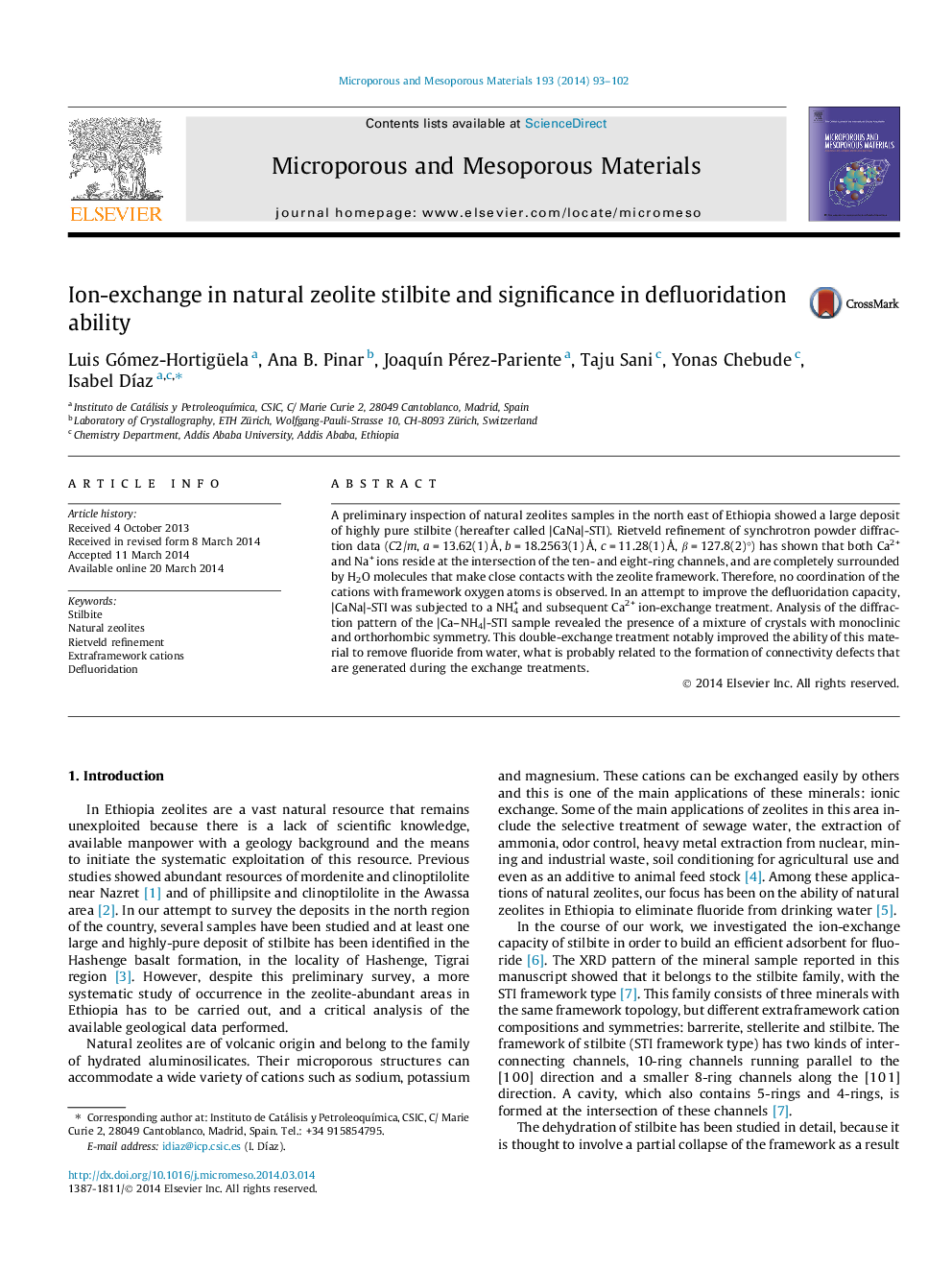| Article ID | Journal | Published Year | Pages | File Type |
|---|---|---|---|---|
| 73044 | Microporous and Mesoporous Materials | 2014 | 10 Pages |
•Natural zeolite stilbite from Ethiopia is tested as adsorbent for fluoride.•Rietveld refinement of synchrotron powder diffraction reveals no coordination of the cations with framework oxygen atoms.•|CaNa|-STI was subjected to a NH4+ and subsequent Ca2+ ion-exchange treatment.•|Ca–NH4|-STI sample revealed the presence of a mixture of crystals with monoclinic and orthorhombic symmetry.•This double-exchange treatment improved the ability to remove fluoride from water.
A preliminary inspection of natural zeolites samples in the north east of Ethiopia showed a large deposit of highly pure stilbite (hereafter called |CaNa|-STI). Rietveld refinement of synchrotron powder diffraction data (C2/m, a = 13.62(1) Å, b = 18.2563(1) Å, c = 11.28(1) Å, β = 127.8(2)°) has shown that both Ca2+ and Na+ ions reside at the intersection of the ten- and eight-ring channels, and are completely surrounded by H2O molecules that make close contacts with the zeolite framework. Therefore, no coordination of the cations with framework oxygen atoms is observed. In an attempt to improve the defluoridation capacity, |CaNa|-STI was subjected to a NH4+ and subsequent Ca2+ ion-exchange treatment. Analysis of the diffraction pattern of the |Ca–NH4|-STI sample revealed the presence of a mixture of crystals with monoclinic and orthorhombic symmetry. This double-exchange treatment notably improved the ability of this material to remove fluoride from water, what is probably related to the formation of connectivity defects that are generated during the exchange treatments.
Graphical abstractFigure optionsDownload full-size imageDownload as PowerPoint slide
